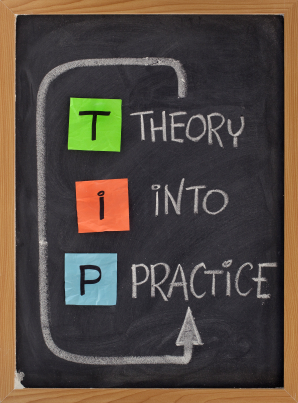Do you spend a considerable amount of your time pitching new business?
If you’re anything like me, there’s probably not a day that goes by that you don’t have pitch someone a new idea. But new business is kind of a different monster. I think a lot of the same principles apply to simply pitching ideas and pitching pieces of business, but today, I want to focus on new business pitches. Whether you’re going at it alone or with a group, here are some tips that might help make your pitching more successful.
Let your ego go – if you’ve gotten as far as pitching, you’ve obviously got the tools to get you in the door. Whether that is a phone call, a note, a written proposal – there’s something about you and your offering that has put you in the position to walk in that door and pitch. So, as soon as you start the pitch machine, let your ego go. Leave it at the door. You will need to make concessions and compromise throughout the process in order to bring forward the best story for your potential client. There is a point in the process, as early as the initial outreach, when it stops being about you and starts being about them. Personal egos typically cloud great solutions.
The aggregate is more powerful than 1– this is certainly the case as a team. Each person on that team should bring something that others do not. Therefore, each person working together, contributing their part, should bring together 1 solid story. If you’re not pitching with a team and you’re going at it alone, bring others – friends, colleagues, mentors, trusted advisors – in along the way. Bounce ideas or stories off of them. Get advice. Pitching is a process that results in a story with a particular shape to it. I’ve found that shape to be more powerful when multiple people have their hands in shaping it vs. 1.
Identify strengths & turn them loose – sometimes roles on the pitch team are defined by actual roles within the organization. It can be assumed that the most senior person on the team should take the lead in the pitch – open, close, drive, etc.. That might not always be the case. Perhaps that person is best to bring the positioning to life. Or to tell personal/relevant stories. Or to bring to life creative ideas. As early on as you can, identify the strengths of everyone on the pitch team, assign roles, and let them rock it out. To be clear, this is not a divide-and-conquer approach. It is simply intended to let people shine at what they’re best at. If you’re going at it alone, really focus and spend time on those components that play to your strengths. Don’t ignore the others, but at the same time, don’t compromise anything that could give you a really good chance to win the business.
Passion could be the silver bullet – I’m overstating the idea that there is a silver bullet, I know. But I don’t know that there is anything more powerful than passion. If you can tap into your own passions and those of your team members, do everything you can to get out of the way and let it come through in the pitch. People in the room can feel passion. It’s infectious. And you want to work for clients who get jazzed by that. What are you passionate about? Can you bring that forward?
“Duh” – Keep it simple – there is usually a specific ask that you are pitching for. Is it to brand or rebrand a product? Is it to create a communications plan? Is it to create a specific solution? More often than not, that’s exactly what they want. I think that we, in agencies, like to read between the lines and interpret what clients really want, based on what they are and/or are not saying. Start with answering the specific ask. And beyond that, in every facet of the pitch, ask yourself, am I telling, showing this in simplest way? Simple does not mean not well thought out or elementary. Simple simply means simple.
“Uh-huh” – What do you want to be remembered for? – as soon as you walk out of that room, after the pitch, the client is going to remember you for something. What do you want that something to be? Answer this early on and let it be your guide throughout the entire process.
In the end, clients want to feel comfortable that you and/or your agency has the experience and the ability to do the work. You’ve got to show that to them. But they also want to partner with a team they can see themselves working with. This comes through in personality and passion. It’s not just the brains that will help you win, it’s the heart, too. Don’t underestimate the heart.
Now, go win some business.













